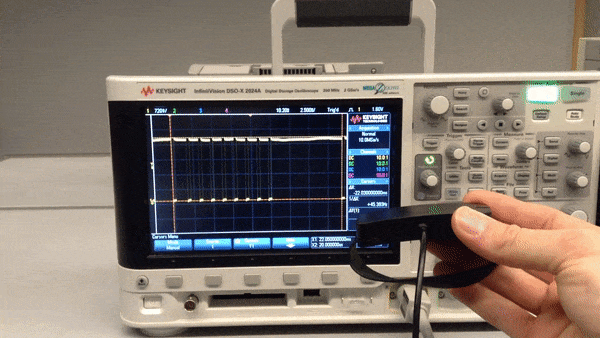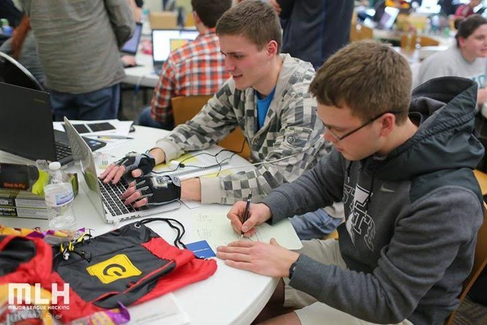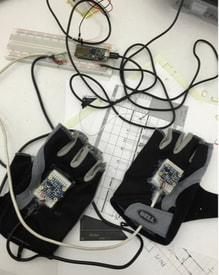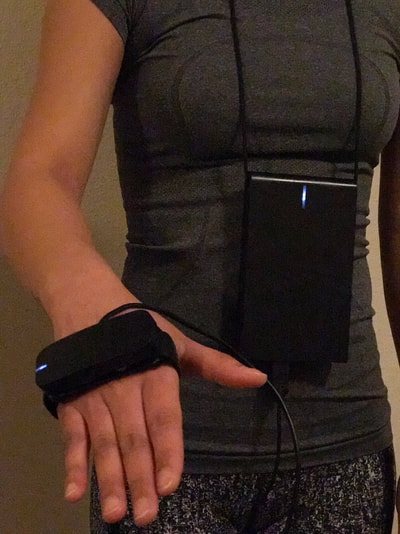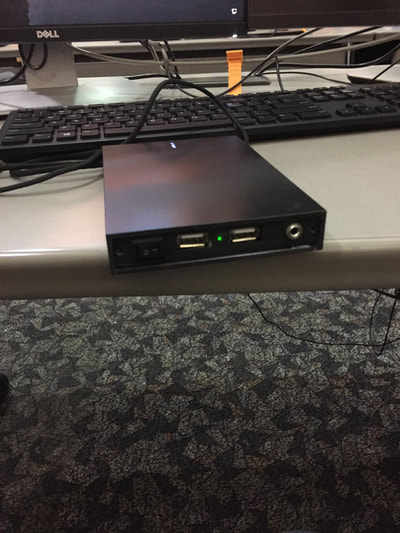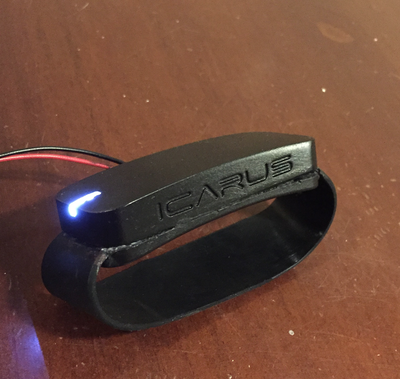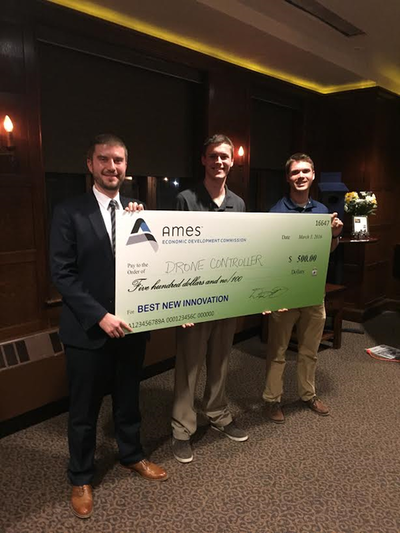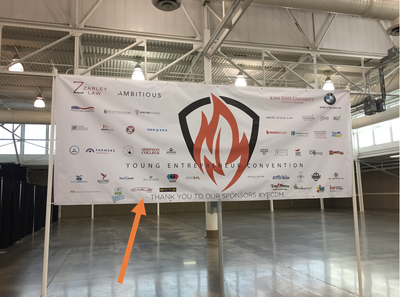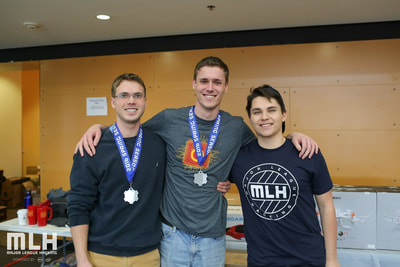Project Icarus
My partner Jakub Hladik, and I had the goal of creating a more user friendly experience for flying a drone. Instead of the conventional remote control, our aircraft receives instructions from the user's hand movements.
My partner Jakub Hladik, and I had the goal of creating a more user friendly experience for flying a drone. Instead of the conventional remote control, our aircraft receives instructions from the user's hand movements.
Version one of this project was created during the Spring 2016 MLH Hackathon "HackISU". This is a competition where you get 36 hours to build and develop any technology you like. At the end of the event judging takes place and a winner is chosen.
|
The idea for this project came about from the discovery of a training port on the back of the drones remote control. This port allows two transmitters to be connected together for training purposes. After analyzing the signals of the transmitters, we were able to generate an identical signal which emulates a trainee signal.
After discovering this, we set out over the next 36 hours to reinvent the traditional controller and create a more natural way to fly a quadcopter. |
We constructed a pair of gloves attached with a BNO055 absolute position sensor. This position information is then accessed over I2C bus interface by our Atmega 32U4 microcontroller. An appropriate 8 channel PPM signal is generated from the processed information and sent over the transmitter to the quadcopter. This signal is shown in the gif above. You can see 8 different pulses that correspond to 8 different channels we can manipulate. In our case these were pitch, roll, yaw, and throttle. This arrangement allows a user to fly the quadcopter using only their hands. The projects code was written using AVR-C, debugging was done over USART.
The first struggle Jake and I ran into was not allowing the sensors enough time to process all data. The second difficulty was our exponential control function model. The calculation would have taken too long to calculate, so we constructed an array look up table to easily grab the tabulated values. We then ran into the problem that this array was too large for our 2.5 kB RAM. We had to save this table in our program memory and then access it during run-time.
|
Features
|
Rev 1
The initial design was two PCB's hot glued on the back of a bicycle glove with the chip and wires freely exposed. This worked well for initial prototyping and was a very simple solution to the the system up and running in the 36 hour window. A simple tilt of the right hand controls pitch and roll effortlessly. Lifting of the left hand controls throttle and a rotation of the wrist controls yaw.
Rev 1 Video: https://www.youtube.com/watch?v=mrlWqo0IHU0
Images of this design are shown below.
The initial design was two PCB's hot glued on the back of a bicycle glove with the chip and wires freely exposed. This worked well for initial prototyping and was a very simple solution to the the system up and running in the 36 hour window. A simple tilt of the right hand controls pitch and roll effortlessly. Lifting of the left hand controls throttle and a rotation of the wrist controls yaw.
Rev 1 Video: https://www.youtube.com/watch?v=mrlWqo0IHU0
Images of this design are shown below.
Rev 2
After the initial 36 hour build we decided to redevelop our system into a more aesthetically pleasing design along with a finalized stabilization mapping. Below are some images of the final product. A central micro-controller is to be warn around the neck which houses the battery (replaceable 9V.) This unit reads in data from the hand motion controllers and outputs a PPM signal to be forwarded to a transmitter. Each of the hand modules contain a BNO055 absolute position sensor along with a silicone wrist band to snug attachment to the back of the hand. The slight curvature easily molds to the users hand and creates a comfortable fit. We have found this design to create a feeling of better control as the motion chip is more in line with the users hand. All three modules have a white LED light to indicate they are powered up and functional.
After the initial 36 hour build we decided to redevelop our system into a more aesthetically pleasing design along with a finalized stabilization mapping. Below are some images of the final product. A central micro-controller is to be warn around the neck which houses the battery (replaceable 9V.) This unit reads in data from the hand motion controllers and outputs a PPM signal to be forwarded to a transmitter. Each of the hand modules contain a BNO055 absolute position sensor along with a silicone wrist band to snug attachment to the back of the hand. The slight curvature easily molds to the users hand and creates a comfortable fit. We have found this design to create a feeling of better control as the motion chip is more in line with the users hand. All three modules have a white LED light to indicate they are powered up and functional.
|
ISU Entrepreneur Pitch Competition
Taking our idea further we decided to enter in a "shark tank" competition. I spoke for 3 minutes on behalf of our project to highlight its key innovation to the radio controlled market. I also provided a business plan of action focusing on the scalability. Our key feature was that our product can work with ANY radio controlled device. During the presentation I had my partner Jake fly the drone using our developed gloves and land the drone into my hand! At the end of the presentation we were awarded the prize for "Best Innovative Idea". The cash winnings were used to further develop the case into the finalized model shown above. Our plans are to develop Rev 3 which will have Bluetooth capability to eliminate our hindering cables. |
|
Widget is loading comments...
